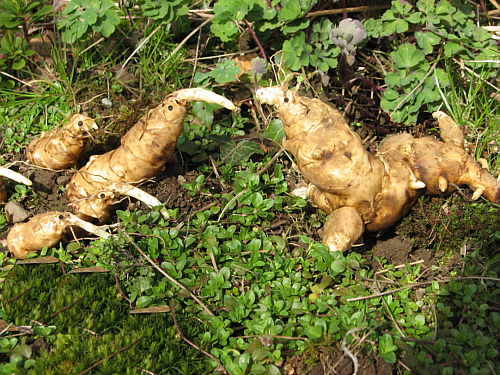
Ecologists in Wales have been warning about species migration caused by global warming for years now. In fact it’s become quite and industry.
Of course, there is an element of swings and roundabouts here, because as some species move north in search of cooler climes, and we loose old familiar species, fascinating refugees from further south will arrive to enrich our countryside.
I hear that computer models predict the imminent demise of the bluebell, there are fears that the Snowdon Lilley – one of Britain’s rarest native alpine plants – will be driven to the mountain tops and then tumble into oblivion. Numerous species of butterflies are expected to forsake their usual Home Counties habitats and head for the northern hills too.
Mitigation measures have, of course, been suggested some quite sensible, others more imaginative than practical, and a few pretty barmy. In the latter category is the idea that we should create escape corridors of uninterrupted wilderness leading northwards, regardless of expense, disruption to anything that lies in their path, and the fact that only computer models of doubtful probity say that they will ever become necessary.
Anyway, does anyone know what these little critters that have turned up in our garden are? My wife is complaining that they keep nipping her ankles.

These are of course Aprilus vulgaris.
I first saw them in the South of England over thirty years ago whereby they had migrated via a rowing boat from Northern France. It is rumoured they originally came from Provence but much more research funds are needed to check this out. I will volunteer to carry out the study.
If they have now reached Wales I must reconsider my stance on AGW as this is a definite sign of the earth warming.
The only consolation is that they hate the wet and never learnt to swim, so in the Welsh climate they are certain to drown (unless your wife would like to knit them little life jackets.)
tonyb
Looks to me that as they crossed the Welsh mountains they spent to long at altitude and the extra radiation they received has caused a mutation that sharpened their teeth and this is why Mrs TonyN is complaining. They weren’t as bad whilst in Gloucestershire.
There is also the Aprilus vulgaris speckleotti variety, from the south coast region of Ireland I believe. While yours do not appear to be this type, genetic testing (or long observation) are the only reliable way to be sure. The Irish variety do seem to thrive on a special mixture of 2 parts beer to 1 part water on Mondays-Wednesdays-Fridays.
PS: Glad to see you up and at ’em.
Yes. And they seem to have been spotted after 2 pints beer and 1 shot Irish whisky on Friday evenings.
Whatever these curious creatures are, their imminent demise (as one of the several hundred million species WWF predict might go extinct in the next few weeks) will serve to usefully highlight the biodiversity holocaust now being perpetrated by rampant AGW in our green and pleasant land.
Looks like it would take quite a few to make a decent meal………..